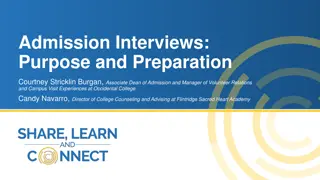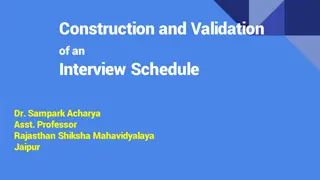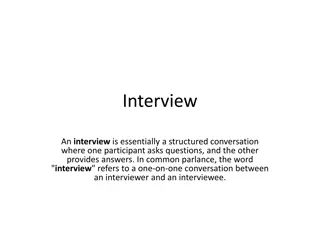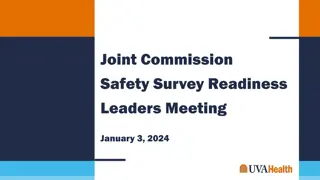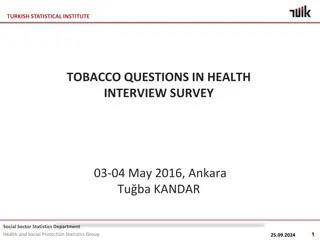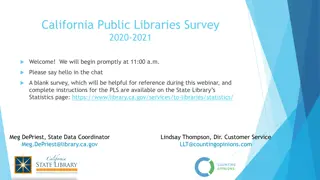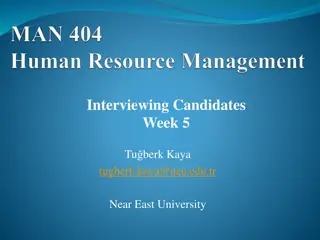Teacher survey and interviews
This study delves into the factors that influence teacher motivation and incentives, aiming to understand job satisfaction, geographic preferences, and the challenges in staffing rural schools. Through surveys and interviews, the research explores the motivations behind teachers' career choices and their commitment to the profession.
Download Presentation

Please find below an Image/Link to download the presentation.
The content on the website is provided AS IS for your information and personal use only. It may not be sold, licensed, or shared on other websites without obtaining consent from the author.If you encounter any issues during the download, it is possible that the publisher has removed the file from their server.
You are allowed to download the files provided on this website for personal or commercial use, subject to the condition that they are used lawfully. All files are the property of their respective owners.
The content on the website is provided AS IS for your information and personal use only. It may not be sold, licensed, or shared on other websites without obtaining consent from the author.
E N D
Presentation Transcript
Teacher survey and interviews Heleen Hofmeyr & Irene Pampallis
Goal: Understanding teacher motivation and incentives
Why motivation? Teachers motivations determines how long they will stay in the profession and their commitment to their jobs (Sinclair, 2008). It also determines which incentives they will respond to i.t.o. being willing to teach in certain schools.
What do we know? 1. Findings from TALIS 2018: a. 80% of teachers report being satisfied with their jobs. b. A high proportion (45%) of teachers want to change schools. c. A quarter of teachers under 50 want to leave the profession in the next 5 years. d. 1 in 5 teachers regret becoming a teacher. 2. Provinces struggle to place teachers in rural schools.
What do we know? (cont.) 3. Many ITE graduates don t become teachers. 4. Many teachers leave the profession.
What dont we know? 1. The why behind the above, e.g.: a. What is it that makes rural schools unattractive? i. Is it simply that they don t want to live in a rural area? ii. Working conditions/school infrastructure? a. Why do some ITE graduates not become teachers? i. Did they never intend to become teachers? ii. Did their studies and practicals put them off the profession?
What dont we know? (cont.) 2. Who is most likely to teach in certain areas or respond to certain incentives? a. Are younger teachers more willing to take up jobs in rural areas? How much does personal background affect where we are willing to teach? 3. The extent of the problem of staffing rural schools a. What proportion of young teachers are willing to work in these schools?
Motivations for becoming a teacher Overview of the survey Job satisfaction Geographic preferences
Who are we surveying? 1. Teachers in government schools 2. Teaching 5 years or less 3. Aiming for representation from: a. All 9 provinces b. Schools in rural areas, small towns, big towns, cities c. High schools & primary schools
Timeline May 2023 Survey piloted with teachers June 2023 Instruments finalised October 2023 Survey data analysed Jan Feb Mar Apr May Jun Jul Aug Sept Oct Nov Dec August 2023 December 2023 Survey distributed to teachers Report released
We want our survey to answer questions that are relevant to your needs. We need your input! *What are the most important issues i.t.o. recruiting teachers? *Are there important questions we aren t asking? *Do some of our questions miss the mark?
Group 4 Group 1 Group 2 Group 3 Job satisfaction & inclination to leave teaching Teacher characteristics Becoming a teacher Where to teach? (Sections 1 & 2) (Sections 3 & 4) (Section 5) (Section 6) 1. Read through the questions in your section of the survey 2. Discuss whether you think they are useful. Would you change them? 3. Write comments on the paper surveys. 4. Write suggested questions on post-it notes. If you finish with your section, feel free to comment on another section!
Paper copies of the draft will be given to each group. Where is the survey? If you want to view it on your device: https://tinyurl.com/5erberdh
Anything else that came from the group discussions? Any other thoughts? Something raised by another group? Any points that haven t been raised?
Contact us Heleen Hofmeyr Irene Pampallis heleenhofmeyr@gmail.com irene.pampallis@gmail.com






